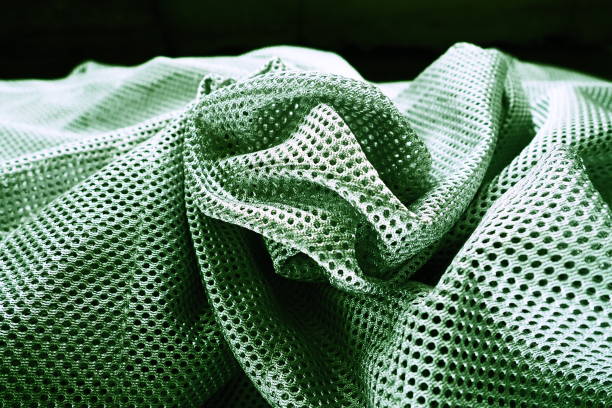In an age where environmental consciousness is more important than ever, earth-friendly clothing is taking center stage in the fashion industry. As consumers become aware of the impact of their choices on the planet, many are seeking alternatives that align with sustainability without compromising style or quality. This article explores what makes clothing earth-friendly, its benefits, and how you can incorporate these choices into your wardrobe.
What Is Earth-Friendly Clothing?
Earth-friendly clothing refers to garments made using sustainable materials and eco-conscious practices. These clothes are designed to reduce environmental harm during their production, usage, and disposal. Key features include:
- Sustainable Materials: Fabrics like organic cotton, hemp, bamboo, and recycled polyester.
- Eco-Friendly Processes: Reduced water usage, non-toxic dyes, and minimal waste.
- Fair Labor Practices: Ethical manufacturing ensures safe working conditions and fair wages.
Why Choose Earth-Friendly Clothing?
Opting for earth-friendly clothing benefits not only the planet but also your lifestyle. Here’s why it matters:
- Reduced Carbon Footprint
Traditional clothing production relies heavily on synthetic materials derived from fossil fuels. In contrast, earth-friendly options use renewable or recycled resources, significantly lowering greenhouse gas emissions. - Less Water Waste
Conventional cotton farming consumes vast amounts of water, whereas organic cotton uses sustainable farming methods to conserve this precious resource. - Healthier Choices
Earth-friendly clothing often avoids toxic chemicals found in dyes and finishes, making it safer for your skin and reducing pollution in water systems. - Longevity and Durability
High-quality sustainable materials tend to last longer, meaning fewer replacements and reduced waste in landfills.
Popular Earth-Friendly Fabrics
Understanding the materials in your wardrobe is the first step toward embracing sustainability. Some of the top earth-friendly fabrics include:
- Organic Cotton: Grown without pesticides or synthetic fertilizers.
- Hemp: Durable and requires minimal water and no pesticides.
- Bamboo: A fast-growing, renewable resource that creates soft and breathable fabric.
- Recycled Polyester: Made from plastic bottles, reducing waste and the need for new raw materials.
How to Transition to an Earth-Friendly Wardrobe
Building an earth-friendly wardrobe doesn’t mean you have to overhaul your closet overnight. Follow these steps to make a gradual, meaningful change:
- Start Small
Replace worn-out items with sustainable alternatives. For instance, switch to organic cotton T-shirts or hemp-based pants. - Support Ethical Brands
Look for brands that prioritize sustainability, transparency, and ethical labor practices. Certifications like Fair Trade, GOTS (Global Organic Textile Standard), and OEKO-TEX can help guide your choices. - Choose Timeless Over Trendy
Invest in versatile, timeless pieces that outlast fleeting fashion trends. This reduces the need for constant purchases. - Care for Your Clothes
To extend the life of your garments, it’s essential to follow proper washing and storage guidelines that protect their integrity and appearance. Start by sorting your laundry based on fabric type and color to prevent damage and fading.
When washing, opt for cold water cycles, as they are gentler on fabrics and can significantly reduce energy consumption. If possible, choose a delicate or hand-wash setting for more fragile items. Additionally, using mild detergents will help maintain the fabric’s quality over time while being kinder to the environment.
Air-drying your clothes is not just an energy-efficient choice; it also helps preserve the shape and elasticity of garments. Avoid direct sunlight, as UV rays can degrade certain fabrics and cause colors to fade. Instead, find a cool, well-ventilated area for drying.
When it comes to storage, ensure your clothes are clean and completely dry before putting them away to prevent mold and mildew. Consider using padded hangers for delicate items and breathable garment bags for seasonal wear to reduce wrinkles and protect against dust.
By following these simple yet effective practices, you can significantly prolong the lifespan of your favorite garments, saving both money and resources while maintaining your wardrobe’s quality and freshness.
The Future of Earth-Friendly Clothing
As demand for earth-friendly clothing grows, the fashion industry is innovating to meet these expectations. From biodegradable fabrics to circular fashion models that emphasize recycling and upcycling, the future looks promising. By choosing sustainable fashion today, you contribute to a movement that supports ethical practices, environmental health, and conscious consumerism.
Conclusion
Earth-friendly clothing is more than a trend—it’s a necessity for a sustainable future. By making informed choices about what you wear, you can positively impact the environment while enjoying high-quality, stylish apparel. Whether you’re just starting or fully embracing eco-fashion, every step toward sustainability makes a difference.
Start your journey to an earth-friendly wardrobe today and become part of the change for a greener planet!



